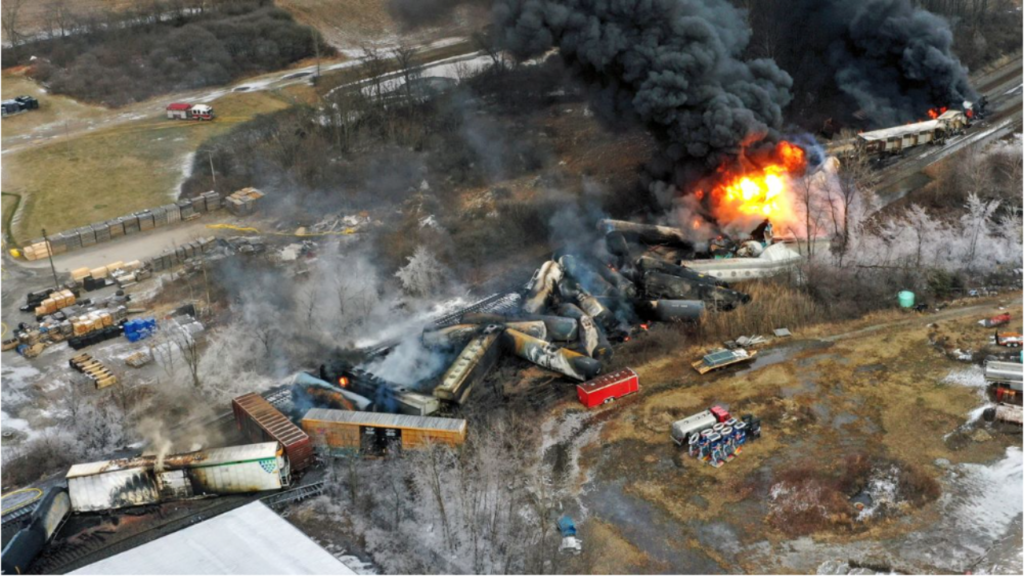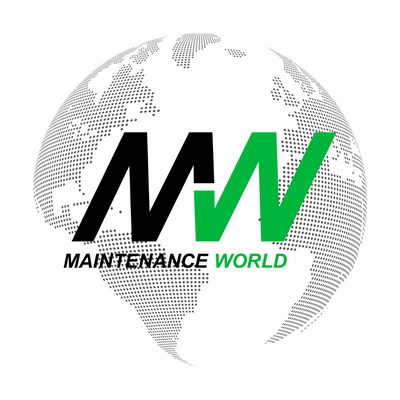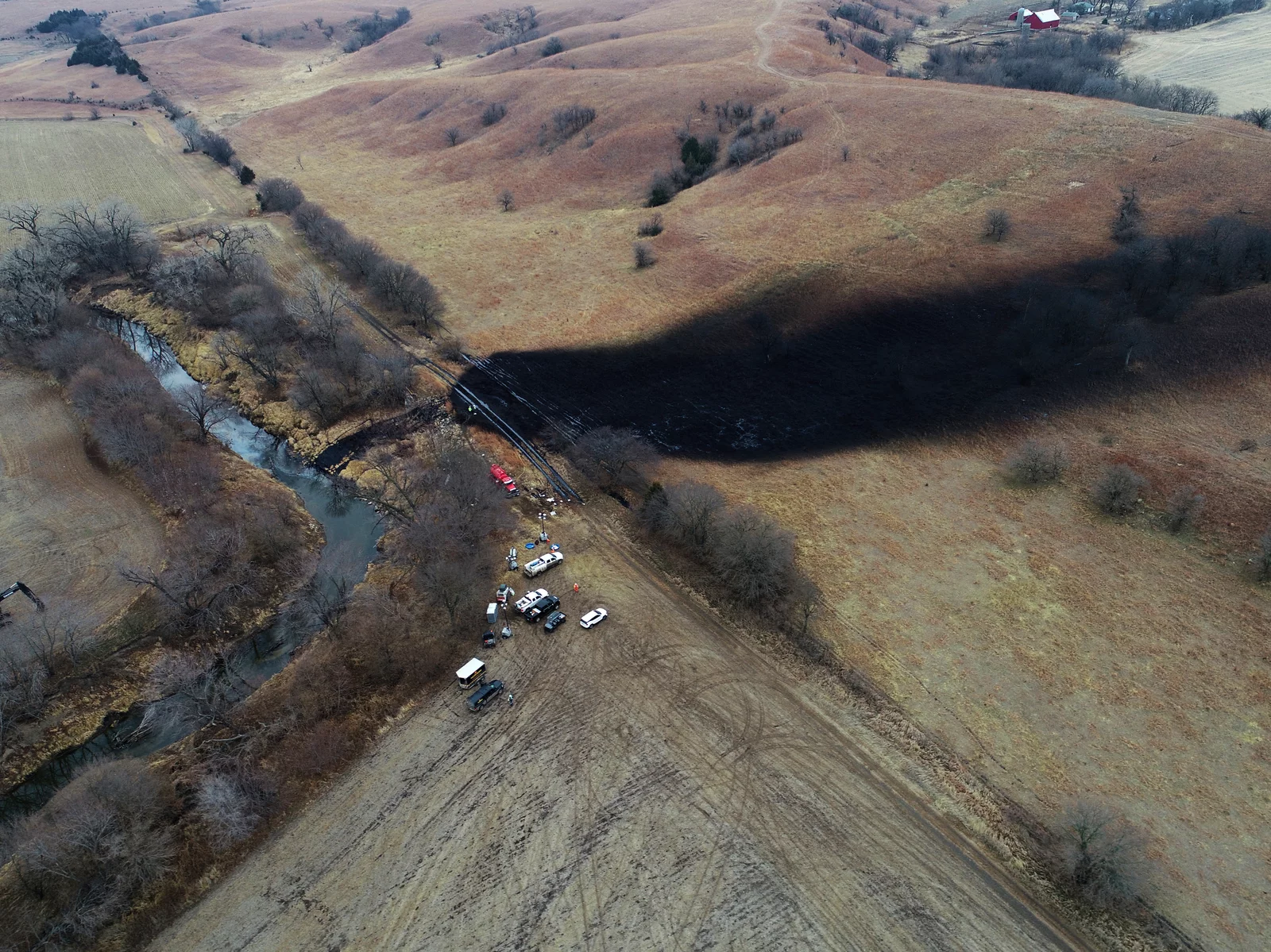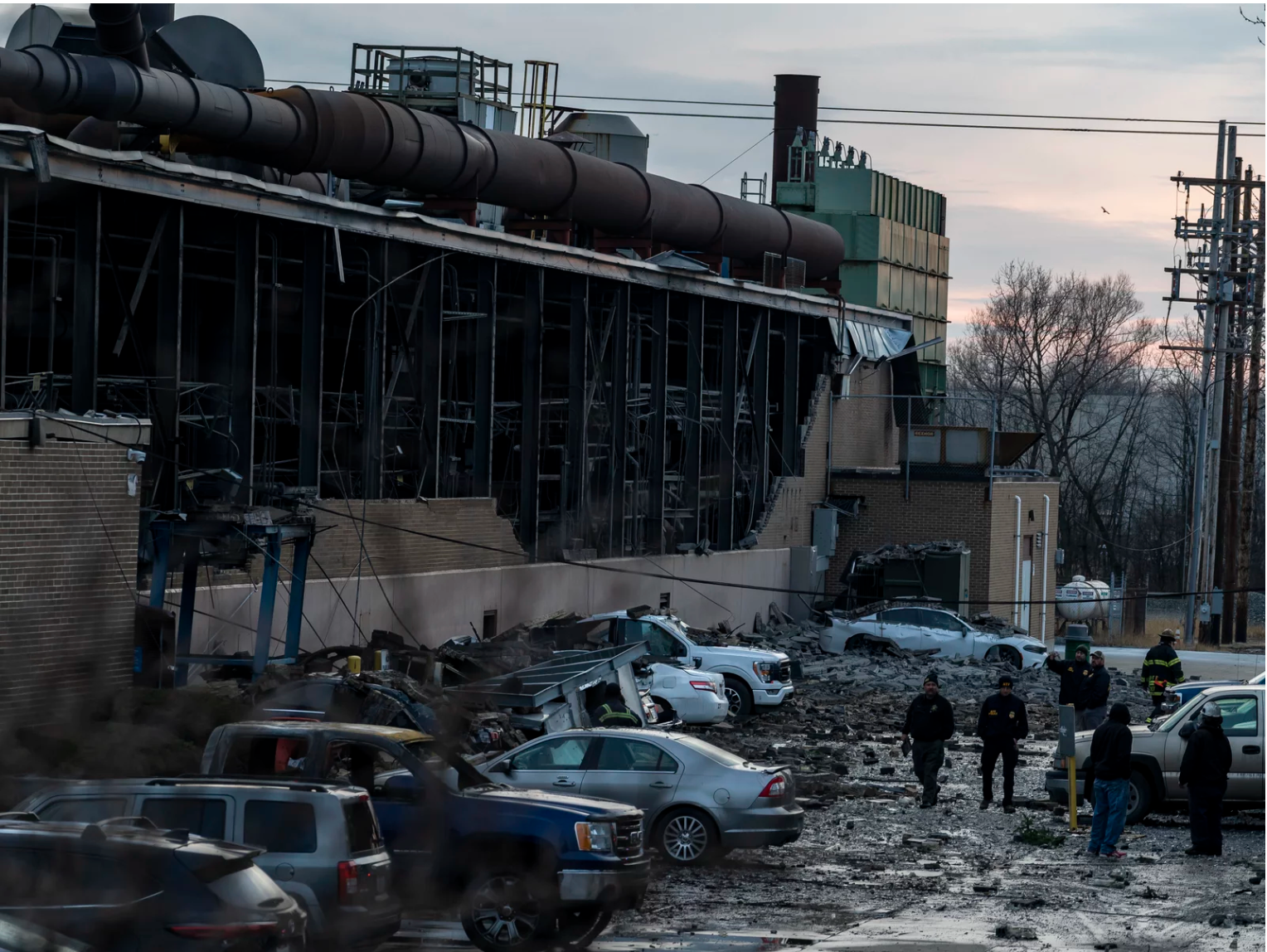Ohio Files Federal Lawsuit over Norfolk Southern Derailment
Natalie Johnson
Posted 03/15/2023
Allegations from Ohio Attorney General over NS Derailment
This week’s news provides several updates about the train derailment in East Palestine, Ohio. If you’ve been reading our newsletters, stick around for this update or dive into the previous article to learn more about the derailment.

On March 14th, the Ohio Attorney General’s office filed a federal lawsuit against Norfolk Southern alleging the company violated hazardous waste and water quality laws and their negligence caused the train derailment and subsequent toxic chemical release.
The lawsuit goes on to address alleged damages to the state of Ohio which include impacts on the economy and environment, as they claim more than 1 million gallons of hazardous material were released at the derailment site. The suit claims the spill will have long lasting impacts and is asking the court to require Norfolk Southern to pay for future environmental monitoring and reimburse the state for all costs incurred in association with the derailment.
This lawsuit increases the pressure Norfolk Southern is already facing as they have been deemed responsible for remedial actions by the EPA and multiple citizens have filed their own lawsuits seeking individual damages. David Yost, the Attorney General, said the lawsuits will run parallel to each other as they are about, “different consequences of the same facts.”
He also stated to the media that, “The fallout of this highly preventable derailment is going to reverberate in Ohio and for Ohioans for many years to come. The company has repeatedly said they want to make it right. Our lawsuit is designed to make sure they keep their promise.” In addition, Yost feels the derailment was preventable and thinks Norfolk Southern may be putting profits above the health and safety of communities they operate in.
EPA Requirements
Norfolk Southern has officially been deemed responsible for cleaning up the derailment site and surrounding area. The EPA has ordered Norfolk Southern to provide a detailed work plan outlining their plan to clean up the water, soil, and debris, reimburse the EPA for providing residents a cleaning of their home/business, and they must show up to public meetings to inform citizens of their progress in the cleanup effort.
Norfolk Southern has already begun cleaning up all contaminated water and soil in the area while ensuring it is safely transported to appropriate locations for disposal. This is in an effort to prevent further contamination and exposure.
So far, 1.7 million gallons of contaminated liquid have been removed from the derailment site and nearly 1 million gallons have been transported to Texas Molecular, a sewage disposal facility in Harris County, Texas. Texas Molecular has more than 4 decades of experience managing water safely and is receiving the contaminated water by trucks. Harris County Judge Linda Hidalgo said it is still unclear to her office the reason the contaminated water is being transported to her state which is not closely located to the derailment site. Some of the water will also be disposed of at a facility located in Vickery, Ohio.
Much of the contaminated soil will be transported to the US Ecology Wayne Disposal Facility located in Belleville, Michigan. So far nearly 5,000 cubic yards of soil have been removed from the derailment site in Ohio and are awaiting transportation to the waste disposal facility in Michigan, they will also be delivered by truckload.

Norfolk Southern has stated that its goal is to listen and address the concerns of citizens. They have expressed interest in developing programs to protect drinking water, creating long-term medical compensation plans, and providing protection for home sellers if their property value drops due to the incident.
If Norfolk Southern does not meet the requirements set by the EPA, the agency will step in and complete the necessary actions. Norfolk Southern would then be responsible for repaying the agency for up to 3x the amount of costs incurred.
Multiple Investigations Continue
As of now, federal officials investigating the derailment do believe it was preventable. As the temperature of the bearing in question increased, the train passed by two wayside detectors that did not alert the crew members because the heat threshold had not been met. When a third detector finally alerted the crew, it was too late. The bearing temperature read 253 degrees above ambient temperature. Evidence collected does not show any indication the crew onboard did anything wrong prior to the derailment.
The next phase of the NTSB investigation will focus on examining the train’s wheelset and bearing to determine the cause of the wheel bearing failure. The NTSB will look at the design of the railcars, the inspection practices of railcars, the maintenance procedures and practices Norfolk Southern has in place, and their use of wayside detectors.
A main question NTSB investigators have pertains to the use of wayside detectors on railroads across the country. The heat thresholds vary widely between railroads and thresholds are set by rail companies themselves. The Federal Railroad Administration issued a safety advisory as a result of this incident urging companies to assess the thresholds they use.
The investigation will also continue to look at Norfolk Southern’s response to a chemical disaster and the manual detonations of tanks containing toxic chemicals as well as the effect this action has had on the surrounding community. In the weeks following the derailment residents have reported headaches, dizziness, nausea, bloody noses, general sickness, and other health issues believed to be associated with the release of vinyl chloride.
Once the investigation is complete the federal agency will determine if new laws or rules need to be instituted. They will mainly look to see if an expanded definition of a high-hazard flammable train is necessary, if vinyl chloride needs to be transported in more fortified train cars, and if wayside hot-box detectors need further regulation.
Jennifer Homendy, the Chair of the National Transportation Safety Board, believes the investigation and subsequent release of probable cause for the derailment could take 12-18 months.

Midweek with Maintenance World
Looking for a midweek break? Keep up with the latest news brought to you every Wednesday by the Maintenance World crew.

Natalie Johnson
Natalie Johnson is the previous editor/website administrator for MaintenanceWorld.com, and is currently a student at Campbell University Norman Adrian Wiggins School of Law.
Related Articles

Cardinal Manufacturing, Helping to Bridge the Manufacturing Skills Gap

South Carolina Ranked as the #1 State for Manufacturing

The Decade of American Reshoring
Lost Radioactive Capsule Proves Preventive Maintenance is as Important as Ever

HBD Condition Monitoring Devices at the center of Ohio Derailment

Failure Analysis Uncovers the Cause of the Keystone Oil Spill




